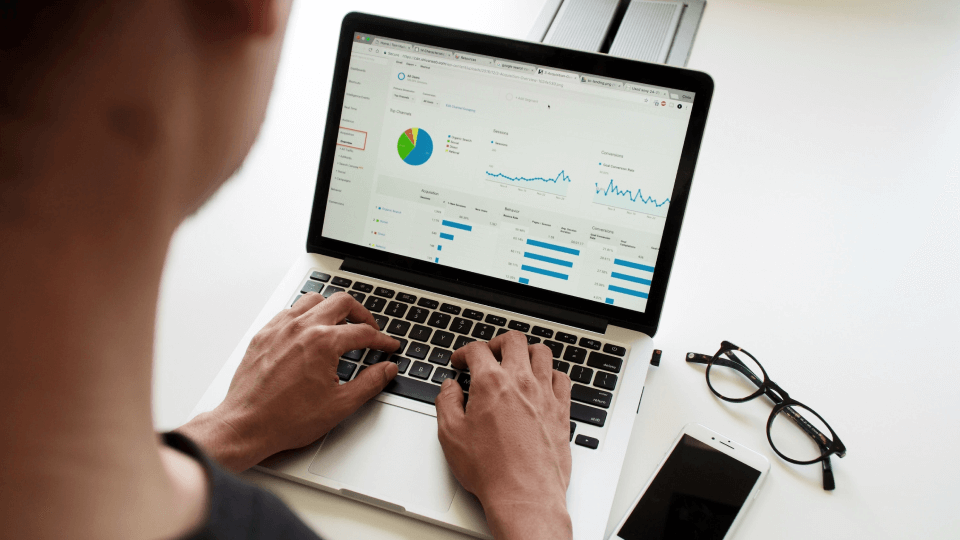14 Mar Why is data important for your restaurant or cafe?
Why is data important for your restaurant or cafe?

Using data may not be what you associate with running a restaurant or cafe, but it can be a great helper in your efforts to create a profitable business – and we know it works! Read along here and learn more about how the use of data can optimize your restaurant – to the benefit of employees, guests and the bottom line.
Data in connection with restaurants – how does it work?
Data is a term for precise information that is usually measurable and provides a more solid decision-making basis than the gut feeling that many restaurateurs operate on today. Therefore, data can also be used in connection with the restaurant industry. We know from experience that the word ‘data’ alone can send chills down the spine of many restaurateurs. However, we would like to help make the use of data more palatable and articulate how data – even with completely impractical use – can optimize your restaurant.
Here are examples of data used by café and restaurant operators:
- Sales reports – which dishes perform and which underperform
- Use of staff cards – a tool for the restaurateur to look inside
- Automatic inventory management – set up your warehouse with POS and get a complete overview
- Intelligent product ordering – statistical prediction of product consumption
In this article, we will focus on how you can use data to optimize your business – both through simple use of data and through more advanced use.
Use of sales reports
One of the most important and simplest ways that the restaurateur can use data to optimize the restaurant is by looking at the sales reports that the POS system generates completely automatically.
The reports tell you exactly how much has been sold of each dish and drink within any time interval. It provides a lot of useful knowledge about one’s menu card and menu composition. That knowledge can, for example, used to see which dishes perform and which dishes underperform (and the same for drinks). It can then be assessed whether some dishes should be removed from the menu, whether the prices should be adjusted or similar.
At the same time, it can also be used to spot trends in sales and contribute to better control of one’s raw material purchases. This means that restaurateurs are better able to buy in the right quantities and thereby reduce food waste while minimizing the risk of running out.
Here we see great value in this simple use of data, as many restaurateurs do not quite know how much needs to be bought in. Therefore, they end up buying in inappropriately large quantities, which end up being thrown away anyway. One of restaurateurs’ worst nightmares is running out, which is why they typically operate with a buffer stock that is far too large, and this results in food waste – neither good for the environment nor the bottom line.
The sales reports are therefore an important element in assessing one’s menu card, but also in being better able to predict expected consumption/sales. Here, however, the sales reports cannot stand alone, but must also be compared with e.g. weather forecast and events in the city to be better able to predict.
Use of staff cards
The system must not be abused
It is certainly not intended that the measure should be used as a tool to create an unpleasant monitoring culture where fingers are pointed at the individual employee for underperformance, but rather as a tool for the restaurateur to look inward and find out why the employee is underperforming This means that the system can easily be abused, but that the real value is to be found in the general optimization of the employees’ processes and workflows.
Optimizing processes and workflows
For example, the system can be used to identify whether the training of new employees is strong enough. Here one could imagine that if it is identified that newly trained employees do not generate a satisfactory amount of additional sales compared to those who have been there for a longer time, the training part dealing with additional sales must be optimized.
The data can also be broken down to each individual employee. If the restaurateur can see from his data that employee A makes significantly more additional sales than the rest of the employees, you can get the employee to share tips and tricks with the other employees and thereby try to increase their additional sales. Similarly, it can also be identified whether employee A is underperforming in relation to the rest of the employees, and then focus on giving the employee some more tools and knowledge to get up to par – again, it must be emphasized here that the tool is not intended to point finger at the employees.
The bottom line, however, is that if the system is used correctly, it can create data of great value to the restaurateur.
Create the valuable overview with automatic warehouse management
With a good POS system, it is possible to integrate the warehouse and at the same time indicate the type and quantity of raw materials used for each individual dish on the menu. This means that the POS system automatically knows that when a burger is sold, for example, x number of grams of meat, x number of grams of tomato, etc. are included. The POS system then makes an automatic stock draw on the order, and the stock is written down with the amount of raw materials used to prepare the order in question.
This gives the restaurateur and/or the person responsible for ordering goods a valuable overview of the current stock status – and even in real time. Via the POS system’s back office, the information can be accessed regardless of where you are.
It is also possible to set up a minimum stock for each individual raw material, so that the restaurateur is automatically notified when there is a low stock of the raw material in question, thereby significantly minimizing the risk of running out. However, this does not remedy inappropriately large purchases or large buffer stocks, which ultimately risk contributing to the food waste statistics.
Intelligent product ordering
As previously mentioned, many restaurants operate with far too large buffer stocks, as restaurateurs find it difficult to assess how much they need to buy. This is primarily because they fear running out and do not really have an overview of how much they expect to sell of each dish, and thus how much they expect to use of a specific raw material. This is exactly what intelligent product ordering can remedy.
Using intelligent product ordering requires, like automatic stock management, that the stock is set up in the POS system and the list of ingredients for the various dishes is entered into the system.
The system works in such a way that the restaurateur simply has to enter the expected revenue for the period for which the item is to be ordered home. The system then makes a very precise statistical analysis of what is expected to be sold in the given period of each dish and beverage in order to achieve the expected revenue. Combined with the current stock status, the system calculates what must be ordered home of each individual raw material, so that the risk of buying too much or too little is significantly minimized.
These were 5 concrete measures for how you can use data to optimize your restaurant – some more advanced than others. We hope that this post has made you curious about how you can use data and that you are inspired to try to implement the use of data in your restaurant. And remember; simple use of data is still use of data.
5 reasons to use data
There are many good reasons why data should be a high priority. Here we give you 5 of the best:
- You can assess in black and white how the various dishes and drinks perform
- You get better at spotting trends in sales
- You optimize processes and internal workflows
- You get a better business and an improved bottom line
You will be able to predict consumption and manage purchases – and at the same time minimize food waste
